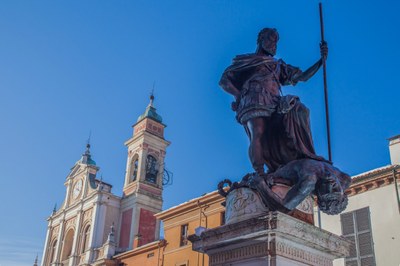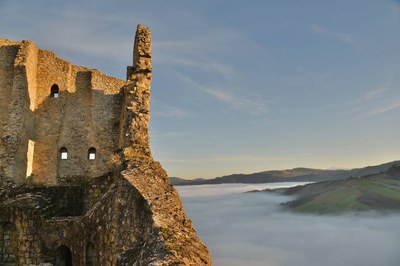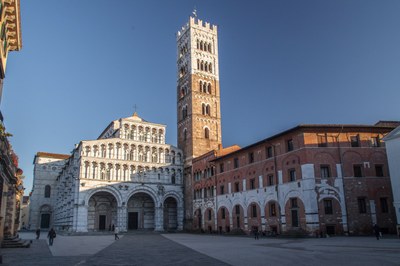Via Matildica del Volto Santo
Information
Route description
The Via Matildica del Volto Santo is a path 285 kilometers long that crosses the territory of three Italian regions (Lombardy, Emilia, Tuscany) rich in culture, traditions, landscapes. A walk to discover the treasures of Matilde of Canossa that runs along castles, churches, monasteries and abbeys, Renaissance cities and medieval villages, from the plains of the Po, through the hills and mountains of the Tuscan Apennines National Park-Emiliano, up to the Garfagnana valleys.
The Matilde of Canossa figure, key personality of the European Middle Ages, is directly linked to four emblematic places:
- Mantova, Matilda of Canossa birthplace in 1046;2.
- San Benedetto Po (MN), where she was buried before being moved to the Vatican;
- Canossa (RE), where the well-known episode of the Emperor Henry IV humiliation in front of Matilda took place in 1077;
- Lucca, original city of the family of Matilde and the Volto Santo, (important wooden crucifix of VIII century).
Stages
The Via Matildica del Volto Santo is a great European route, which penetrates the cultural, historical, economic and religious imagination of the Continent, a journey to discover the territories of Matilde di Canossa to be faced in its entirety or divided into its three historical traits:
- The Preziosissimo Sangue way, which starts from Mantua, to the center of Reggio Emilia;
- The San Pellegrino way, destination of great pilgrimages in the Apennines, which starts from the Church of San Pellegrino in Reggio Emilia and leads up to San Pellegrino in Alpe
- The Via del Volto Santo is a destination of faith and ancient devotion, connecting San Pellegrino in Alpe to Lucca.
In ancient times, this network of itineraries that crossed longitudinally the North of Italy, were connected to the wider road network that connected the Papal States to the Germanic and Northern European kingdoms. Here the Kingdom of Matilda had the dual function of being both in defense of the papacy, and a safe crossing place where caravans and connections to north-south Europe and vice versa could travel. The Via Matildica del Volto Santo was therefore part of a larger network of European roads that, during the Middle Ages, had to connect much of the Old Continent.
The route can be run in its entirety, there are 11 overall stages to be covered in about fifteen days, or choosing the stages closest to their interests: spiritual, naturalistic, cultural history. To be covered slowly on foot or by bicycle, to the rediscovery of the places, the stations of rest and the times of the ancient medieval caravans.
The route meets other important routes, such as the Sentiero dei Ducati, in the territory of Reggio Emilia, Vezzano sul Crostolo, Quattro Castella e Canossa and the Sentiero Spallanzani, near the Palazzo dei Musei of Reggio Emilia.
THE PREZIOSISSIMO SANGUE WAY

1) Mantova - San Benedetto Po:
The route starts from the city of Mantova, to continue along the cycle path of the river Mincio that leads directly to San Benedetto Po, dominated by the abbey complex of Polirone.
2) San Benedetto Po - Guastalla:
From San Benedetto, taking the cycle path along the Po River, you get to Guastalla (RE), where in addition to the Romanesque churches you can visit the small capital of the Gonzaga kingdom.
3) Guastalla - Reggio Emilia:
Leaving Guastalla, you go up the shaft of the Crostolo Creek to the new Mediopadana AV Station of Reggio Emilia, landmark and symbolic and efficient hub and interchange. From here, you walk a few kilometers to the Reggio Emilia Town Center.
THE SAN PELLEGRINO WAY


Information and contacts
![]() Places and Routes of Via Matildica
Places and Routes of Via Matildica





